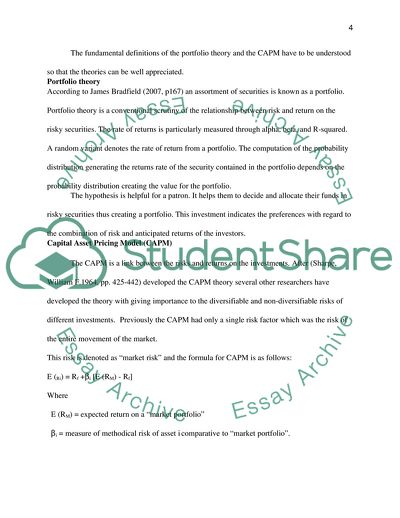Cite this document
(Relevance of Portfolio Theory and Capital Asset Pricing Model Assignment - 3, n.d.)
Relevance of Portfolio Theory and Capital Asset Pricing Model Assignment - 3. Retrieved from https://studentshare.org/finance-accounting/1729745-critically-analyse-the-relevance-of-portfolio-theory-and-the-capital-asset-pricing-model-capm-to-an-investor-or-fund-manager-in-the-equity-markets
Relevance of Portfolio Theory and Capital Asset Pricing Model Assignment - 3. Retrieved from https://studentshare.org/finance-accounting/1729745-critically-analyse-the-relevance-of-portfolio-theory-and-the-capital-asset-pricing-model-capm-to-an-investor-or-fund-manager-in-the-equity-markets
(Relevance of Portfolio Theory and Capital Asset Pricing Model Assignment - 3)
Relevance of Portfolio Theory and Capital Asset Pricing Model Assignment - 3. https://studentshare.org/finance-accounting/1729745-critically-analyse-the-relevance-of-portfolio-theory-and-the-capital-asset-pricing-model-capm-to-an-investor-or-fund-manager-in-the-equity-markets.
Relevance of Portfolio Theory and Capital Asset Pricing Model Assignment - 3. https://studentshare.org/finance-accounting/1729745-critically-analyse-the-relevance-of-portfolio-theory-and-the-capital-asset-pricing-model-capm-to-an-investor-or-fund-manager-in-the-equity-markets.
“Relevance of Portfolio Theory and Capital Asset Pricing Model Assignment - 3”, n.d. https://studentshare.org/finance-accounting/1729745-critically-analyse-the-relevance-of-portfolio-theory-and-the-capital-asset-pricing-model-capm-to-an-investor-or-fund-manager-in-the-equity-markets.


